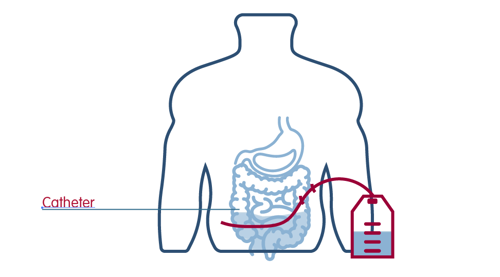Long-term ascitic drain
What is a long-term ascitic drain?
The overproduction of fluids in the abdomen can lead to bloating in the stomach region. This is called ascites. We can drain the fluid with various punctures, but because these are performed at the hospital, you will need to come in for every puncture. If these punctures need to be performed frequently and we do not expect the fluid buildup to decrease, a long-term ascitic drain may be an option for you. This long-term drain allows you to drain the fluids yourself, at home. A long-term ascitic drain is a flexible tube that can drain fluid buildup from the abdomen. To prevent infection, the drain is placed slightly under the skin first, and will then be led to the abdomen. There are holes at the end of the drain in the abdominal cavity to allow the fluids to easily flow out of the abdominal cavity. This end of the drain that is located outside of the body is closed off with a cap. The fluids can only drip out once the tube is connected to a tube connected to a collection bag.

Illustration of a long-term ascitic drain
 nl
nl
 Nederlands
Nederlands